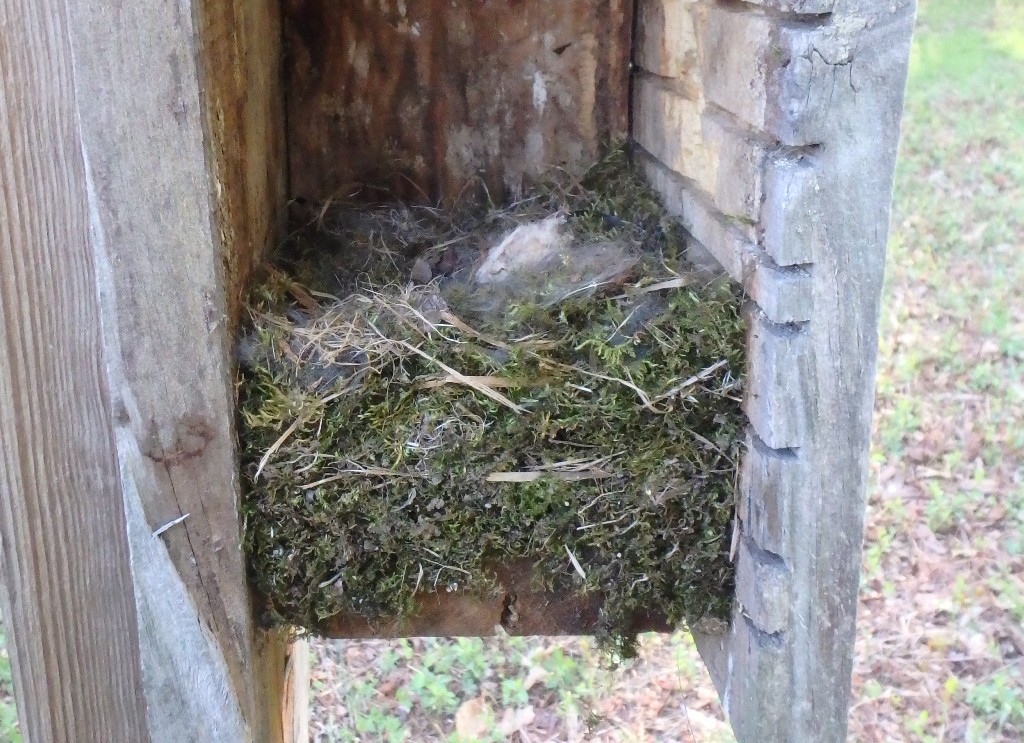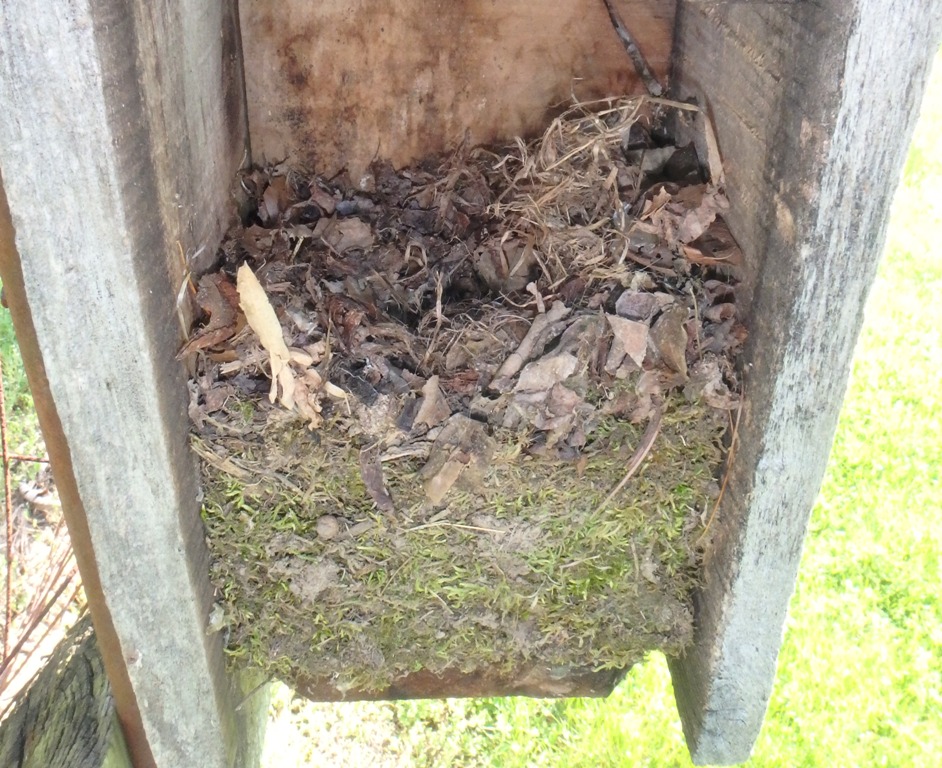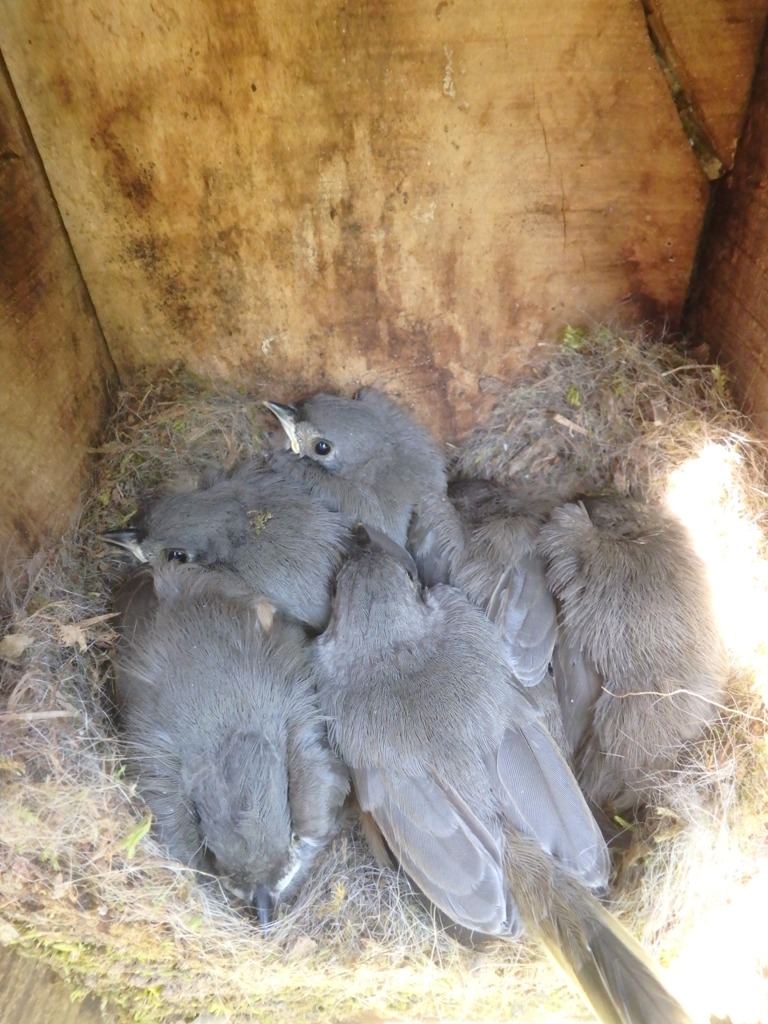Mariton: Always Learning
by Tim Burris, Preserve Manager.
I have been monitoring nest boxes for over 30 years now. Back in the late 1990’s I started getting Chickadees nesting in the boxes at Mariton. At the same time, other preserve managers that were monitoring their nest boxes started reporting Chickadee nests in their boxes also. Chickadees are cavity nesters – they naturally find cavities in trees to build their nests. And we knew from reading that they used nest boxes, yet it was interesting that a few of us all began seeing Chickadees using our nest boxes at the same time.

Chickadee nest. Notice the hair.
I knew from reading that Tufted Titmice made a similar nest to Chickadees. Moss was the main ingredient and something that set the two species’ nests apart from other cavity nesters. It wasn’t until around 2005 when I saw my first Tufted Titmouse nest, and I knew right away it wasn’t a Chickadee nest. Where Chickadees use hair, Titmice use leaves.

Tufted Titmouse nest. Notice the leaves.
This year I started out with three different Tufted Titmice nests in early May. Over the years, Titmice have had varying success in Mariton’s nest boxes. While we have had successful seasons, there have been a lot of nests that were abandoned. I am a big proponent of checking nest boxes every 7 – 10 days. (For me I learn a lot about the development and progress by checking once a week. Sometimes if you check on 14 day intervals, you don’t know if the birds fledged, or were attacked by predators.)
While I never spend more than 30 seconds at a nest box, I decided this year to check on the Titmouse nests every other week. (I still monitored the rest of my boxes weekly.) I wondered if my monitoring was causing adults to abandon nests. In 2012, 13 Tufted Titmice fledged out of 2 different nest boxes, so I wasn’t totally convinced that monitoring was the cause of abandonment.

Tufted Titmice fledglings about to leave home.
This year, with limited monitoring, 15 Titmice fledged out of the three boxes – and no abandonment. Was monitoring the difference? I think the data is still a little sparse. Next year if Titmice use the boxes, I’ll try a limited monitoring schedule again. Then in 2020, I’ll go back to the weekly monitoring to see if there is a difference. It was the years of observations and record keeping that influenced me to try something different. In the old days, we called this trial and error, today the term is adaptive management. It doesn’t matter what we call it, the important thing is the time spent doing something, watching what happens, and asking yourself why? and what happens if?. That is one of the things that sets Natural Lands apart from other organizations that manage natural areas. Our stewardship staff have histories with their preserves that allow them to try things, observe and ask questions.
